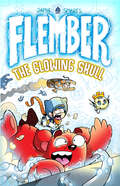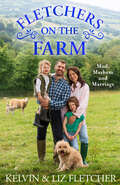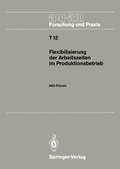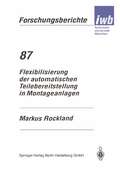- Table View
- List View
Flavor Perception
by Deborah D. Roberts Andrew J. TaylorUnlike other human senses, the exact mechanisms that lead to our perception of flavor have not yet been elucidated. It is recognised that the process involves a wide range of stimuli, which are thought likely to interact in a complex way, but, since the chemical compounds and physical structures that activate the flavor sensors change as the food is eaten, measurements of the changes in stimuli with time are essential to an understanding of the relationship between stimuli and perception. It is clear that we need to consider the whole process - the release of flavor chemicals in the mouth, the transport processes to the receptors, the specificity and characteristics of the receptors, the transduction mechanisms and the subsequent processing of signals locally and at higher centres in the brain. This book provides a state-of-the-art review of our current understanding of the key stages of flavor perception for those working in the flavor field, whether in the academic or industrial sector. In particular, it is directed at food scientists and technologists, ingredients suppliers and sensory scientists.
Flavor, Satiety and Food Intake (Institute of Food Technologists Series)
by Beverly Tepper Martin YeomansThis unique book provides a comprehensive review of the latest science on a key aspect of appetite control. It brings together contributions by leading researchers worldwide who approach this complex, multifaceted issue from a variety of differing perspectives, including those of food science, psychology, nutrition, and medicine, among others. It is well known that products that require greater oral processing tend to be more sating. At the same time, the orosensory exposure hypothesis holds that flavor and texture in the mouth are critical in determining meal-size. They may act as key predictors of nutritional benefits and so promote better processing of foods. These two related ideas are at the forefront of current thinking on flavor-satiety interactions. Yet, until Flavor, Satiety and Food Intake no book has offered an integrated treatment of both concepts. The only single-source reference of its kind, it brings health professionals, product developers, and students up to speed on the latest thinking and practices in this fascinating and important area of research. Provides readers with a unique and timely summary of critical recent developments in research on the impact of flavor on satiety Explores a topic of central importance both for food professionals seeking to develop healthier products and health professionals concerned with obesity and over-eating Brings together relevant topics from the fields of food science, psychology, nutrition and medicine Flavor, Satiety and Food Intake provides product developers with valuable information on how to integrate sensory evaluation with product formulation and marketing. It will also serve as a useful resource for health professionals and is a must-read for students of a range of disciplines in which appetite and satiety are studied.
Flavor, Satiety and Food Intake (Institute of Food Technologists Series)
by Beverly Tepper Martin YeomansThis unique book provides a comprehensive review of the latest science on a key aspect of appetite control. It brings together contributions by leading researchers worldwide who approach this complex, multifaceted issue from a variety of differing perspectives, including those of food science, psychology, nutrition, and medicine, among others. It is well known that products that require greater oral processing tend to be more sating. At the same time, the orosensory exposure hypothesis holds that flavor and texture in the mouth are critical in determining meal-size. They may act as key predictors of nutritional benefits and so promote better processing of foods. These two related ideas are at the forefront of current thinking on flavor-satiety interactions. Yet, until Flavor, Satiety and Food Intake no book has offered an integrated treatment of both concepts. The only single-source reference of its kind, it brings health professionals, product developers, and students up to speed on the latest thinking and practices in this fascinating and important area of research. Provides readers with a unique and timely summary of critical recent developments in research on the impact of flavor on satiety Explores a topic of central importance both for food professionals seeking to develop healthier products and health professionals concerned with obesity and over-eating Brings together relevant topics from the fields of food science, psychology, nutrition and medicine Flavor, Satiety and Food Intake provides product developers with valuable information on how to integrate sensory evaluation with product formulation and marketing. It will also serve as a useful resource for health professionals and is a must-read for students of a range of disciplines in which appetite and satiety are studied.
Flavoromics: An Integrated Approach to Flavor and Sensory Assessment (Food Analysis & Properties)
by Leo M. L. Nollet Matteo BordigaForty years of progress in the fields of gas chromatography and data collection have culminated in flavoromics. This is a combination of chemometrics and metabolomics. Essentially, it is the non-targeted way of rapidly collecting a significant amount of data from a wide range of sample populations and using the data to study complicated topics. Now that we have the required tools, we can carry out high-throughput trace investigations that incorporate both gustatory and olfactory signals. Flavoromics: An Integrated Approach to Flavor and Sensory Assessment describes the tools to do high-throughput, trace analyses that represent both taste and olfaction stimuli. It explains how today's single sample research will generate thousands of data points, which are loaded into sophisticated statistical analysis algorithms to establish what stimuli are responsible for flavor. This cutting-edge equipment will enable us to create flavorings and perfumes that are more realistic and superior. Key Features: Includes a detailed section on data handling/mining Section 4 describes a broad overview of different food matrices Points out the integration of flavoromics with advanced separation methods, data management, statistical modeling, and variable selection This book represents a revolutionary tool waiting to help make better, truer to life flavorings and fragrances.
Flavoromics: An Integrated Approach to Flavor and Sensory Assessment (Food Analysis & Properties)
Forty years of progress in the fields of gas chromatography and data collection have culminated in flavoromics. This is a combination of chemometrics and metabolomics. Essentially, it is the non-targeted way of rapidly collecting a significant amount of data from a wide range of sample populations and using the data to study complicated topics. Now that we have the required tools, we can carry out high-throughput trace investigations that incorporate both gustatory and olfactory signals. Flavoromics: An Integrated Approach to Flavor and Sensory Assessment describes the tools to do high-throughput, trace analyses that represent both taste and olfaction stimuli. It explains how today's single sample research will generate thousands of data points, which are loaded into sophisticated statistical analysis algorithms to establish what stimuli are responsible for flavor. This cutting-edge equipment will enable us to create flavorings and perfumes that are more realistic and superior. Key Features: Includes a detailed section on data handling/mining Section 4 describes a broad overview of different food matrices Points out the integration of flavoromics with advanced separation methods, data management, statistical modeling, and variable selection This book represents a revolutionary tool waiting to help make better, truer to life flavorings and fragrances.
Flavors for Nutraceutical and Functional Foods (Nutraceuticals)
by M. Selvamuthukumaran Yashwant PathakFlavors are an integral part of nutraceutical formulations. Flavors offer significant advantage to Nutraceuticals when it comes to palatability and get an edge over other products in an extremely competitive nutraceutical market. Flavors for Nutraceuticals and Functional Foods addresses different natural ingredients/botanicals used in various functional foods and nutraceutical products. The techniques of incorporating flavors in Nutraceutical products can be classified as conventional and using recently developed modern techniques such as nanotechnology are also covered in different chapters. These techniques are mainly used for masking the taste of nutraceutical and functional food products. The book discusses the basics of flavors and the significance of the flavor industry in relation to Nutraceuticals. This book covers various processes involved in incorporating flavor and improving product acceptability. It provides an overview on the potential applications of the main terpene based flavors as part of nutraceuticals formulations. This book will serve as a reference to academicians and industry people who are involved in Nutraceutical formulations and marketing.
Flavors for Nutraceutical and Functional Foods (Nutraceuticals)
by M. Selvamuthukumaran Yashwant PathakFlavors are an integral part of nutraceutical formulations. Flavors offer significant advantage to Nutraceuticals when it comes to palatability and get an edge over other products in an extremely competitive nutraceutical market. Flavors for Nutraceuticals and Functional Foods addresses different natural ingredients/botanicals used in various functional foods and nutraceutical products. The techniques of incorporating flavors in Nutraceutical products can be classified as conventional and using recently developed modern techniques such as nanotechnology are also covered in different chapters. These techniques are mainly used for masking the taste of nutraceutical and functional food products. The book discusses the basics of flavors and the significance of the flavor industry in relation to Nutraceuticals. This book covers various processes involved in incorporating flavor and improving product acceptability. It provides an overview on the potential applications of the main terpene based flavors as part of nutraceuticals formulations. This book will serve as a reference to academicians and industry people who are involved in Nutraceutical formulations and marketing.
Flavour: From Food to Perception (Woodhead Publishing Series In Food Science And Technology)
by Elisabeth Guichard Christian Salles Martine Morzel Anne Marie Le BonThis book will cover all aspects of flavour perception, including aroma, taste and the role of the trigeminal nerve, from the general composition of food to the perception at the peri-receptor and central level. This book will answer to a growing need for multidisciplinary approaches to better understand the mechanisms involved in flavour perception. The book presents the bases of anatomy of sensory perception. It will provide the requisite basic knowledge on the molecules responsible for flavour perception, on their release from the food matrix during the eating process in order to reach the chemosensory receptors, and on their retention and release from and transformation by bodily fluids of the oral and nasal cavities. It will also bring current knowledge on the multimodal interactions. This book will also cover the recent evolution in flavour science: characterisation of molecules, interaction with food matrix and more recently, physic-chemical and physiological and events during oral processing increasingly considered.
Flavour: From Food to Perception
by Elisabeth Guichard Christian Salles Martine Morzel Anne Marie Le BonThis book will cover all aspects of flavour perception, including aroma, taste and the role of the trigeminal nerve, from the general composition of food to the perception at the peri-receptor and central level. This book will answer to a growing need for multidisciplinary approaches to better understand the mechanisms involved in flavour perception. The book presents the bases of anatomy of sensory perception. It will provide the requisite basic knowledge on the molecules responsible for flavour perception, on their release from the food matrix during the eating process in order to reach the chemosensory receptors, and on their retention and release from and transformation by bodily fluids of the oral and nasal cavities. It will also bring current knowledge on the multimodal interactions. This book will also cover the recent evolution in flavour science: characterisation of molecules, interaction with food matrix and more recently, physic-chemical and physiological and events during oral processing increasingly considered.
Flavours and Fragrances: Chemistry, Bioprocessing and Sustainability
by Ralf Günter BergerThis book is an introduction to the world of aroma chemicals, essential oils, fragrances and flavour compositions for the food, cosmetics and pharmaceutical industry. Present technology, the future use of resources and biotechnological approaches for the production of the respective chemical compounds are described. The book has an integrated and interdisciplinary approach on future industrial production and the issues related to this topic.
Flaws and Testing (Fracture Mechanics of Ceramics #4)
by R. C. Bradt D. P. Hasselman F. F. LangeThese volumes, 3 and 4, of Fracture Mechanics of Ceramics con stitute the proceedings of an international symposium on the frac ture mechanics of ceramics held at the Pennsylvania State Univer sity, University Park, PA on July 27, 28, and 29, 1977. Volumes 1 and 2 were published previously as the proceedings of a sympo sium of the same name held July 11, 12, and 13, 1973, also at Penn State. All four volumes published to date concentrate on the fracture aspects of the mechanical behavior of brittle ceramics in terms of the characteristics of cracks. The program chairmen gratefully acknowledge the financial as sistance for the symposium provided by the Office of Naval Re search, the Energy Research and Development Administration, and the Army Research Office. Without their support the quality and mag nitude of this conference simply would not have been possible. Numerous individuals contributed to the success of the con ference, but unfortunately they cannot all be listed here. However the program chairmen would especially like to recognize the contri butions of Penn State Conference Coordinator, Mr. Ronald Avillion, whose expertise in planning and organization was indispensable; Dr. Fred R. Matson for his interesting after dinner speech; and Drs. A. M. Diness, J. C. Hurt, and D. W. Readey for their en couragement and valuable suggestions regarding the program. Finally, we wish to also thank our joint secretaries for the patience and help in bringing these proceedings to press.
Flax-TRM Composite Systems for Strengthening of Masonry: From Material Identification to Structural Behavior (Springer Theses)
by Giuseppe FerraraThis book is intended to raise awareness about the use of sustainable Textile-Reinforced Mortar (TRM) composite systems, including plant fibers, for civil engineering applications. It presents a comprehensive characterization of the mechanical properties of Flax-TRM composite systems when used for strengthening masonry elements. Moreover, it reports on a physical and mechanical characterization of the single components, such as the textile and mortar one. In turn, it describes tensile tests on the composite and shear bond tests on Flax-TRM-to-masonry substrate elements, carried out for the purpose of analyzing the composite material and its adherence behavior with a brick masonry element. It also reports on the analysis of the contribution of the reinforcement system on the shear capacity of masonry elements, carried out via diagonal compression tests. Last but not least, the book reports on some innovative solutions for improving the mechanical performance of the reinforcement system, e.g., by treating the fiber or modifying the matrix mix design, discussing the experimental findings in detail. All in all, this book offers extensive information on the use of plant fibers as reinforcement in TRM systems, specifically highlighting the potential of this composite as strengthening strategy for various civil engineering applications. Moreover, it defines key mechanical aspects of the composite that must be taken into consideration for increasing the efficiency of the reinforcing system. Last but not least, the book describes some technical solutions aimed at an overall improvement of the structural performance of sustainable textile-reinforced composite.
The Fleece & Fiber Sourcebook: More Than 200 Fibers, from Animal to Spun Yarn
by Carol Ekarius Deborah RobsonThis one-of-a-kind encyclopedia shines a spotlight on more than 200 animals and their wondrous fleece. Profiling a worldwide array of fiber-producers that includes northern Africa&’s dromedary camel, the Navajo churro, and the Tasmanian merino, Carol Ekarius and Deborah Robson include photographs of each animal&’s fleece at every stage of the handcrafting process, from raw to cleaned, spun, and woven. The Fleece & Fiber Sourcebook is an artist&’s handbook, travel guide, and spinning enthusiast&’s ultimate reference source all in one.
Fleet Telematics: Real-time management and planning of commercial vehicle operations (Operations Research/Computer Science Interfaces Series #40)
by Asvin GoelThis book combines wireless telematics systems with dynamic vehicle routing algorithms and vehicle-positioning systems to produce a telematics-enabled information system that can be employed by commercial fleet operators for real-time monitoring, control, and planning. The book further presents a Messaging And Fleet Monitoring System and a Dynamic Planning System (DPS) that provides real-time decision support considering the current state of the transportation system.
Fleets Go Green (Sustainable Production, Life Cycle Engineering and Management)
by Christoph Herrmann Mark Stephan Mennenga Stefan BöhmeThe book presents the results of the research project Fleets Go Green from different engineering disciplines. It includes comprehensive empirical data as well as different methods and tools for evaluating and integrating electric vehicles into corporate fleets. Finally, the authors give recommendations for fleet owners, vehicle manufacturers and political decision. The aim of the joint research project Fleets Go Green was the integrated analysis and evaluation of the environmental performance of electric and plug-in-hybrid vehicles in everyday usage on the example of fleet operations. The potential of electric vehicles for reducing the harmful environmental impacts of road transport in everyday conditions can only be analyzed and evaluated in field tests. If electric vehicles should realize their potential to reduce emissions and minimize the consumption of resources, an integrated life cycle assessment is required.
Flember: The Secret Book (Flember)
by Jamie SmartA MYSTERIOUS island!A strange and mystical power called FLEMBER!A boy-inventor called DEV, who uncovers a long-forgotten secret…And a GIANT RED ROBOT BEAR!!The sleepy village of EDEN is about to descend into HILARIOUS CHAOS. Can disastrous Dev save his brand-new best friend?Written and illustrated by Jamie Smart.
Flember: The Glowing Skull (Flember #3)
by Jamie SmartDEV and BOJA have found the super hi-tech city of PROSPERITY. But everything there is really WEIRD! People are battling it out in EPIC races. The sewers are DISGUSTINGLY stinky. And BOJA discovers he has SUPER powers. Will they ever get home? THE RACE IS ON!
Fletchers on the Farm: Mud, Mayhem And Marriage
by Kelvin Fletcher Liz Fletcher‘We jumped in at the deep end and bought a farm! A reluctant wife, a couple of crazy kids and a husband whose knowledge of farming you could write on the back of a stamp… What could go wrong?!’ – Kelvin ‘Exactly! And the journey has only just begun…’ – Liz Join the Fletchers as they navigate the peaks and troughs of life on a lively farm.
Flexibel automatisierte Demontage von Fahrzeugdächern (IPA-IAO - Forschung und Praxis #271)
by Reinhard RupprechtFlexibel automatisierte Montage hochpoliger Rundkabel (IPA-IAO - Forschung und Praxis #211)
by Ralf CramerFlexibel automatisierte Montage von Holzdübeln mit Industrierobotern (IPA-IAO - Forschung und Praxis #270)
by Thomas HörzDie vorliegende Arbeit entstand während meiner Tätigkeit als wissenschaftlicher Mitarbeiter am Fraunhofer-Institut für Produktionstechnik und Automatisierung (IPA), Stuttgart. Mein besonderer Dank gilt Herrn Prof. Dr.-Ing. Dr. h. c. E. Westkämper, der mir die erfolgreiche Durchführung dieser Arbeit an seinem Institut ermöglicht hat. Herrn Prof. Dr.-Ing. Dr. h. c. U. Heisel danke ich für die Übernahme des Mitberichts und die eingehende Durchsicht der Arbeit. Mein Dank gilt auch Herrn Dr.-Ing. J. Tröger für die wertvollen Hinweise, die sich bei der Durchsicht der Arbeit und der anschließenden Diskussion ergaben. Aus dem großen Kreis der Kollegen am Institut, die mich durch ihre Mitarbeit und anregende Kritik unterstützt haben, möchte ich Herrn Prof. Dr.-Ing. Dr. h. c. R. D. Schraft, Herrn Dr.-Ing. M. Schweizer, Herrn Dr.-Ing. H. Dreher, Herrn Dipl.-Ing. J. C. Spingier, Herrn Dipl.-Ing. F. Visel und Herrn Dipl.-Ing. W. Haase erwähnen. Ihnen allen sowie den Studenten, die am Gelingen meiner Arbeit beteiligt waren, gilt mein herzlicher Dank. Ganz besonders danke ich meiner Frau Jutta und meiner Tochter Julia Isabel, die mit viel Verständnis und mancherlei Verzicht zum Gelingen dieser Arbeit wesentlich beigetragen haben. Dieses Buch widme ich in großer Dankbarkeit meinem verstorbenen Vater, der meinen Werdegang geprägt und mir diesen ermöglicht hat.
Flexibel automatisiertes Taumelnieten (IPA-IAO - Forschung und Praxis #244)
by Wolf-Dieter SchneiderFlexibilisierung der Arbeitszeiten im Produktionsbetrieb: IAO-Forum 9. November 1988 in Stuttgart (IPA-IAO - Forschung und Praxis Tagungsberichte #12)
by Hans-Jörg BullingerArbeitszeit ist keine einheitlich vorgegebene starre Größe mehr. Dauer und Lage der Arbeitszeit können unterschiedlich und beweglich gestaltet werden. Das schafft die Möglichkeit, die jeweiligen Erfordernisse des einzelnen Unternehmens, aber auch die ebenfalls nicht einheitlichen Interessen der Arbeitnehmer zu berücksichtigen. Neue Technologien sowie veränderte Marktanforderungen stellen an die Arbeitsorganisation und Arbeitsgestaltung der Produktionsbetriebe neue Aufgaben. Der Arbeitszeitgestaltung kommt hierbei eine nicht zu unterschätzende Bedeutung zu. Eine Vielzahl von Faktoren ist bei der Planung und Einführung neuer Arbeitszeitsysteme zu berücksichtigen, beispielsweise die Laufzeit der Maschinen, der Zuwachs an bedienerloser Maschinenzeit, die Schwankungen der Auftragsvolumina, der zunehmende Konkurrenzdruck, die Entwicklung der Personalkosten und das Bedürfnis der Mitarbeiter nach mehr Zeitsouveränität. Der vorliegende Band ist den zentralen Fragestellungen der Planung und Umsetzung flexibler Arbeitszeitmodelle gewidmet. Wissenschaftler und betriebliche Experten stellen ihre Erkenntnisse und Erfahrungen vor und erläutern vor allem die betriebswirtschaftlichen und rechtlichen Aspekte der Flexibilisierung der Arbeitszeiten im Produktionsbetrieb.




















